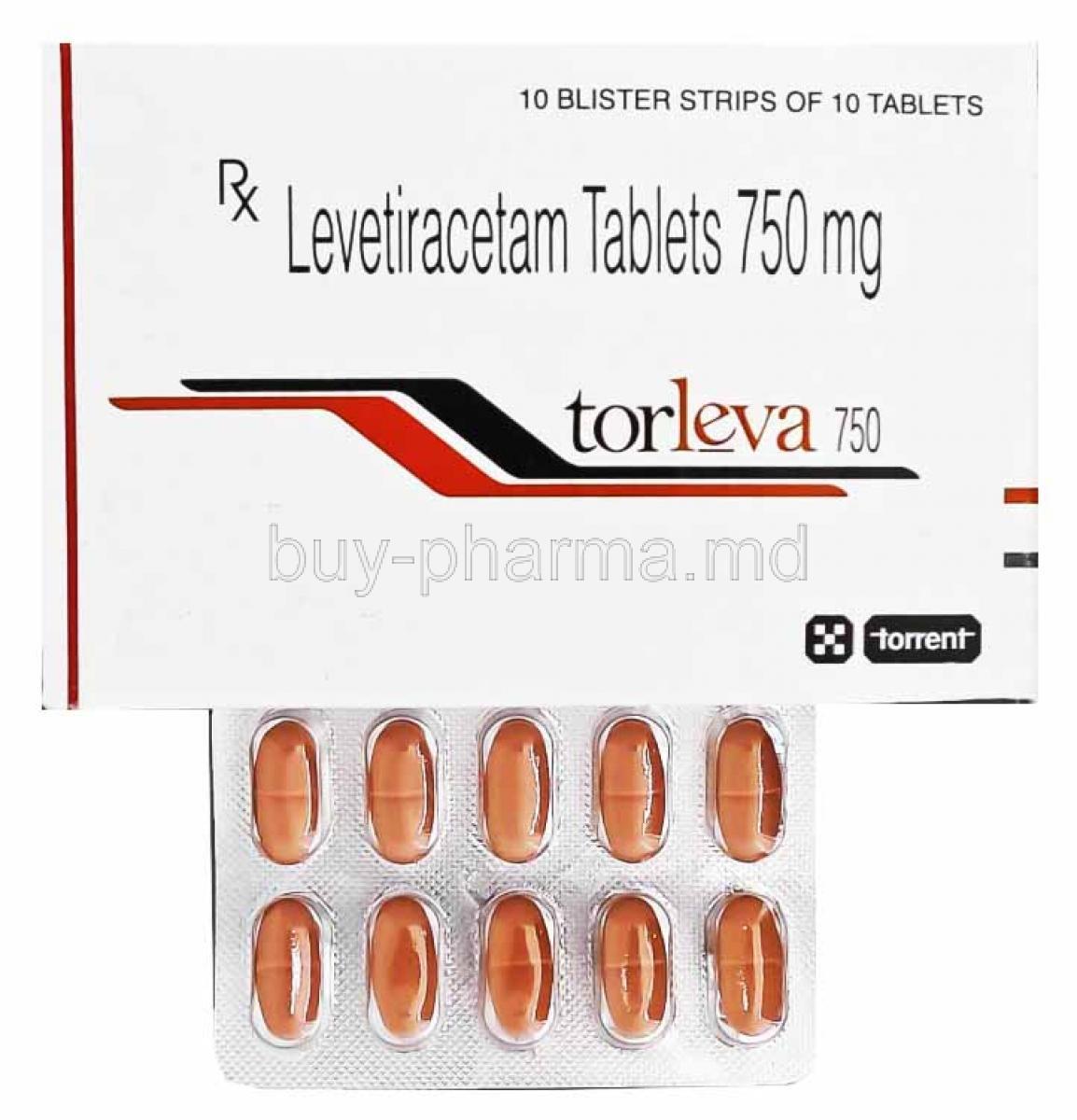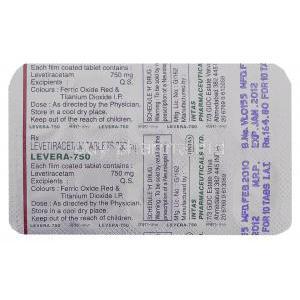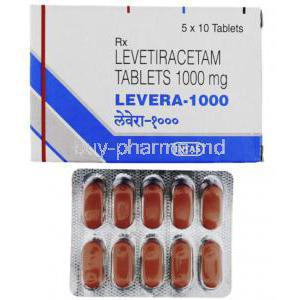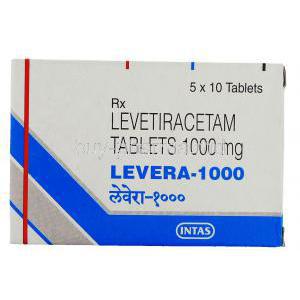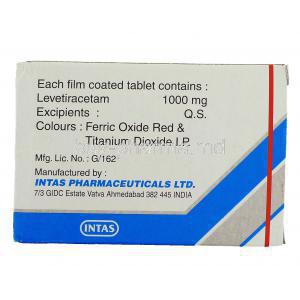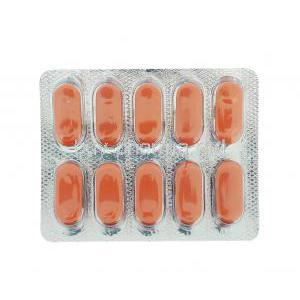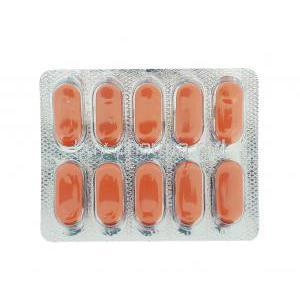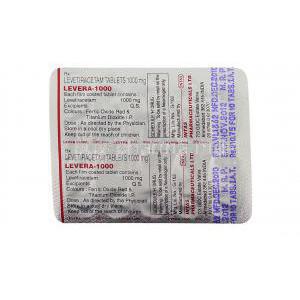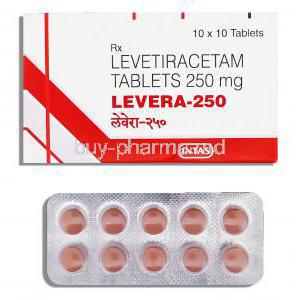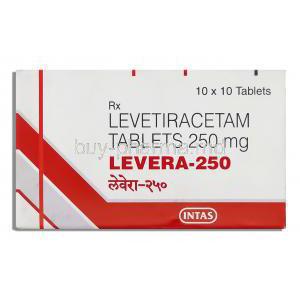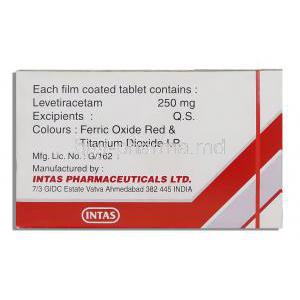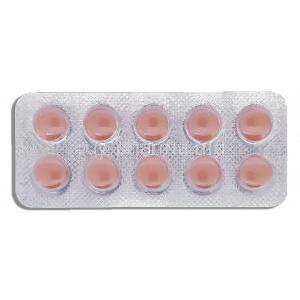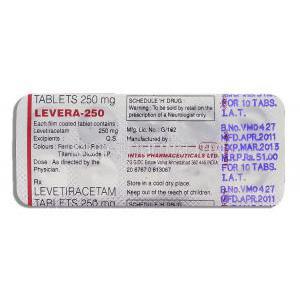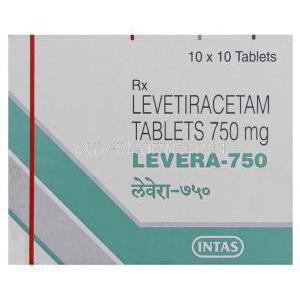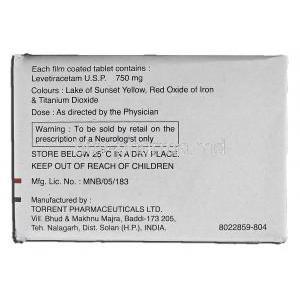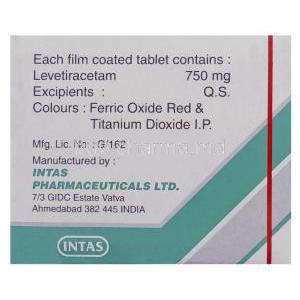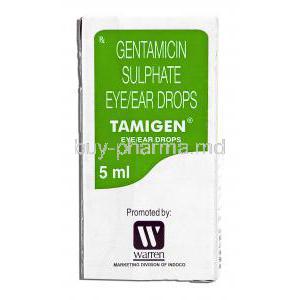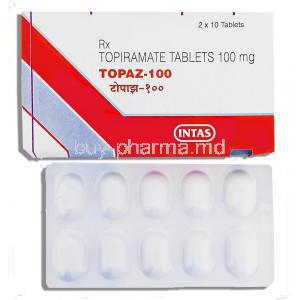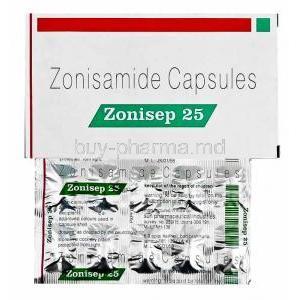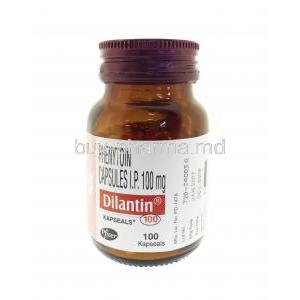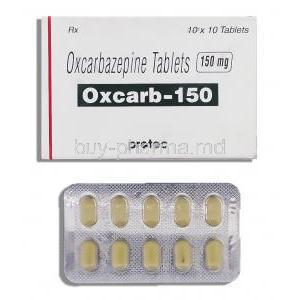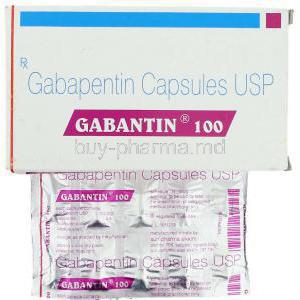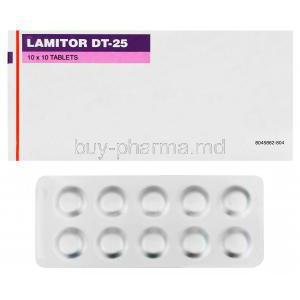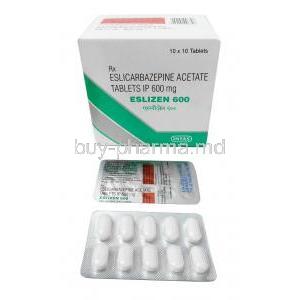Levetiracetam
- I. Introduction
- II. Composition of Levetiracetam
- III. How Levetiracetam Works
- IV. Uses of Levetiracetam
- V. Off-Label Uses of Levetiracetam
- VI. Dosage and Administration of Levetiracetam
- VII. Levetiracetam Interactions
- VIII. Side Effects of Levetiracetam
- IX. Contraindications and Warnings
- X. Careful Administration of Levetiracetam
- XI. Levetiracetam Overdose
- XII. Handling and Storage Precautions
- XIII. Important Precautions When Using Levetiracetam
I. Introduction
A. Overview of Levetiracetam
Marked by its remarkable efficacy, Levetiracetam proves to be an influential antiepileptic drug for effectively addressing seizures. From partial onset seizures to primary generalized tonic-clonic and myoclonic seizures, it demonstrates commendable effectiveness across an array of epilepsy syndromes.(1) This particular drug belongs to the category of pyrrolidone derivatives showcasing its distinct pharmacological profile indicative of its deviation from classical antiepileptics.
1. PubMed - Levetiracetam: a novel antiepileptic drug.
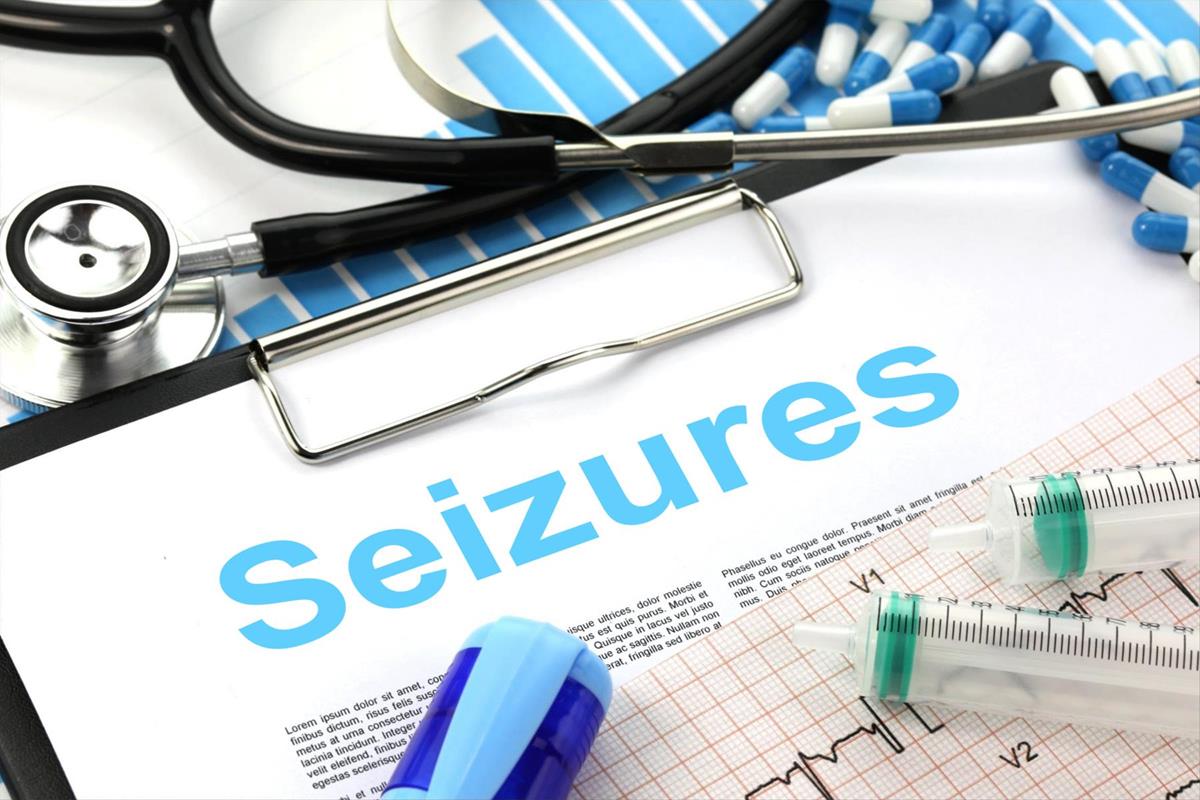
B. Historical Development and Approval
Levetiracetam was developed by a team of talented researchers at UCB, a respected Belgian pharmaceutical company. Its distinct molecular structure was first created in 1978. However, it wasn't until the year 1999 that the drug made its way into the market. This happened when the U.S. Food and Drug Administration (FDA) approved adjunctive treatment in adults with partial onset seizures. Over time the FDA expanded its approval to encompass various other types of epilepsy in adults and children.
C. Role in the Medical Field
In contemporary medicine circles, Levetiracetam plays an integral role owing to its favorable safety profile and notable scarcity for drug interactions, Notably employed as a monotherapy or adjunctive therapy for epilepsy management purposes. This drug also possesses broader implications beyond epilepsy treatment. Ongoing investigations explore the potential benefits it may offer in attenuating neuropathic pain levels, Varying anxiety disorders, The progression of Alzheimer's' disease, and specific differentiations within cancer categorizations.
II. Composition of Levetiracetam
A. Active Ingredients
The active ingredient in Levetiracetam is Levetiracetam itself. This substance, which appears as a white to off-white crystalline powder, plays a crucial role in the drug's pharmacological action. It acts as the active component that interacts with synaptic vesicle proteins in the brain leading to its antiepileptic effect.
B. Inactive Ingredients and Role in Efficacy
Even though the inactive ingredients do not directly contribute to the antiepileptic effects of this medication, their significance lies in ensuring its overall efficacy and safety. These include;
- Microcrystalline cellulose, which facilitates uniform distribution of the active ingredient
- Croscarmellose sodium aids in tablet disintegration for improved bioavailability
- Magnesium stearate prevents ingredient adherence during manufacturing processes.
Despite their apparent insignificance, these unassuming components govern this drug's pharmacokinetics and thus form an integral part of its therapeutic regimen.
C. Various Forms and Strengths Available
Levetiracetam is offered in different forms to suit the needs of patients. These include immediate-release tablets, extended-release tablets, oral solutions, and injectable solutions. This wide range of options provides flexibility in administration. Moreover, the drug is available in a variety of strengths, Ranging from 250 mg to 1000 mg for immediate-release tablets and 500 mg to 1500 mg for extended-release tablets. This allows for precise dose adjustments to cater to each patient's specific treatment requirements.
III. How Levetiracetam Works
A. Mechanism of Action
Levetiracetam differs from other antiepileptic drugs in terms of its mechanism of action. It interacts with a specific protein called SV2A, which is present in nerve terminals; by doing so, It affects the release of neurotransmitters—ultimately resulting in its antiepileptic effect. This drug is particularly noteworthy because it doesn't rely on conventional targets such as ion channels or receptors, Showcasing its unique and innovative approach to managing seizures.(1)
1. PubMed - Levetiracetam
B. Time of Onset and Duration of Action
By demonstrating swift action, Levetiracetam usually reaches its highest concentration in the blood approximately one hour after oral consumption. Its half-life varies from 6 to 8 hours among adults allowing for administration twice daily. This enables continuous seizure control as the medications' effects span the period between doses.
C. Interaction with the Nervous System
Levetiracetam's impact on the nervous system primarily revolves around its interaction with SV2A—a fundamental protein involved in synaptic vesicle exocytosis. The drug effectively binds to this particular protein and interrupts the release of excitatory neurotransmitters, as a result, Ultimately reducing neuronal hyperexcitability notably, Despite such interference, There are no notable disruptions in normal neurotransmission observed with this medication—an aspect that highlights its favorable safety profile.
IV. Uses of Levetiracetam
A. FDA-Approved Uses
1. Epilepsy: Partial Onset Seizures
When it comes to addressing partial onset seizures that originate from localized areas within the brain, Levetiracetam assumes center stage in their management. Its impressive efficacy as both monotherapy and adjunctive therapy has cemented its valuable position in the collection of antiepileptic treatments available(1). By significantly curbing neuronal hyperexcitability, which serves as the foundation for these seizures, it offers substantial relief for individuals grappling with this condition.(2)
1. PubMed - Levetiracetam in the treatment of epilepsy
2. National Library of Medicine - Efficacy of levetiracetam in partial seizures
2. Primary Generalized Tonic-Clonic Seizures
Managing primary generalized tonic clonic seizures is no easy task, previously dubbed grand mal seizures. They present a significant hurdle in terms of therapeutic intervention. Nevertheless, Levetiracetam emerges victorious as it triumphantly addresses this challenge head-on with its remarkable efficiency in subduing these convulsive fits through its ability to impede the sudden surge of excessive electrical discharges occurring within the brain and acting as triggers for these episodes. It unquestionably ameliorates patient symptoms and ultimately enhances their quality of life.
3. Myoclonic Seizures in Patients with Juvenile Myoclonic Epilepsy
Levetiracetam has proven to be highly effective in managing myoclonic seizures, which are characterized by sudden and involuntary muscle twitches. This medication is especially well suited for patients with juvenile myoclonic epilepsy, a condition that typically starts during adolescence, by regulating the abnormal neural activity responsible for these jerking movements. Levetiracetam plays a crucial role in controlling seizures in this specific group of patients.
B. Effectiveness and Efficiency in Different Patient Populations
Levetiracetam is highly versatile and practical, providing benefits to a wide range of patients. It is not limited by age as it effectively treats both children and adults, addressing the unique challenges faced by each group. It is exceptionally safe for elderly patients and those taking multiple medications due to its low potential for drug interactions.
Additionally, it offers hope to patients with refractory epilepsy when other drugs have failed. Moreover, Levetiracetam goes beyond seizure control in terms of clinical efficiency. Its safety profile and tolerability contribute to better patient compliance, which is crucial for the overall success of antiepileptic therapy.
Its availability in different dosage forms and strengths further enhances its efficiency by allowing personalized treatment based on individual patient needs. In summary, Levetiracetam's effectiveness extends across age groups and disease severity levels, making it an essential component of epilepsy management.
V. Off-Label Uses of Levetiracetam
A. Use in Migraine Prevention
Levetiracetam offers relief to those who suffer from chronic migraines. Although it was not primarily designed for this purpose. This potent antiepileptic drug shows promise in mitigating the frequency and severity of migraines. Its distinct mode of operation involves reducing neuronal hyperexcitability, which proves advantageous in preventing the episodic bouts of headaches and sensory disturbances that characterize this neurological condition.
B. Use in Neuropathic Pain
Neuropathic pain is a burdensome type of long-lasting pain caused by nerve damage. It can sometimes not improve with traditional pain relievers. In such situations, Levetiracetam comes into play and shows promising outcomes in reducing neuropathic pain. It's capacity to suppress the abnormal nerve activity that triggers this kind of pain positions it as a possible treatment option for patients struggling with persistent neuropathic pain.
C. Other Potential Therapeutic Applications
As researchers continue to delve into the pharmacological potential of Levetiracetam. They are uncovering new therapeutic applications.
- One area of exploration is its potential role in reducing hyperexcitability in Alzheimer's disease, which could help mitigate cognitive impairment and memory loss.
- Additionally, Levetiracetam shows promise in managing certain anxiety disorders due to its effects on neurotransmitter release and neural excitability.
- Furthermore, experimental models suggest Levetiracetam may have anticancer properties, a promising lead that deserves further investigation.
Overall these off-label uses of Levetiracetam are at different stages of investigation and clinical validation, but they highlight the drug's versatility and potential for broader therapeutic applications.
VI. Dosage and Administration of Levetiracetam
A. General Dosage Guidelines
The dosage of levetiracetam is carefully adjusted to meet each patient's specific needs, Ensuring a perfect balance between its effectiveness and tolerability. In the case of partial onset seizures, it is typically recommended for adults to begin with a dosage of 500 mg taken twice daily. This amount can then be gradually increased by 1000 mg every two weeks, if necessary up until reaching a maximum daily dose of 3000 mg.
On the other hand. For patients experiencing myoclonic seizures due to juvenile myoclonic epilepsy or primary generalized tonic-clonic seizures. It is recommended to start with a daily dose of 1000 mg. This dosage can be raised as needed but should not exceed 3000 mg daily.
B. Dosage Adjustments in Special Populations
Dosage adjustments may be necessary for special populations due to changes in how the body processes medications when it comes to elderly patients. It is crucial to proceed with caution when adjusting their doses as there may be a decline in kidney function related to age. Patients with kidney problems also require dosage adjustments, with lower doses being prescribed based on their creatinine clearance. For patients receiving hemodialysis, An additional dose is usually needed after treatment to replace the medication removed during the procedure.
C. Administration Methods and Best Practices
Levetiracetam offers different options for its administration, including oral tablets or solutions as well as intravenous infusion. This provides flexibility in how the medication can be taken. When taken orally, levetiracetam can be consumed with or without food, while intravenous administration requires dilution and infusion over 15 minutes, regardless of the chosen method, It is essential to maintain consistent dosing intervals to achieve steady-state plasma concentrations and improve seizure control.
VII. Levetiracetam Interactions
A. Drug-Drug Interactions and Impact on Efficacy
Levetiracetam has a low likelihood of causing drug-drug interactions due to its distinctive pharmacokinetics. It does not greatly affect hepatic cytochrome P450 enzymes, which are often linked to drug interactions. However, it is important to exercise caution when using it alongside other central nervous system (CNS) depressants as there may be an additive sedative effect.
B. Drug-Food Interactions
The impact of food on the absorption of Levetiracetam is minimal—such a feature grants flexibility in administering this medication alongside meals or independently. Subsequently, patients can choose when to take it without being constrained by specific meal times, thereby promoting better compliance.
C. Other Potential Interactions and Precautions
Although Levetiracetam generally has a positive interaction profile, It is important to be aware of a few precautions. One such precaution is the potential for increased central nervous system depression when used concurrently with alcohol. Therefore caution should be exercised in these cases. Although there are no specific contraindications for Levetiracetam, It is advisable to use it judiciously in patients with a history of psychiatric disorders as it may worsen mood and behavioral changes.
VIII. Side Effects of Levetiracetam
A. Common Side Effects
1. Nervous System Side Effects
Nervous system side effects account for a substantial fraction of the unfavorable effects associated with Levetiracetam. Some individuals may encounter drowsiness, fatigue, dizziness, and difficulties in coordination. In certain cases. Patients may also disclose headaches.(1)
1. Wikipedia - Levetiracetam

Dizziness
2. Gastrointestinal Side Effects
Gastrointestinal disturbances frequently accompany the use of Levetiracetam. These disturbances can encompass a range of symptoms, from mild nausea and vomiting to more severe discomforts such as dyspepsia and diarrhea. It is worth noting that in the majority of instances, these effects are temporary and tend to diminish over time as the medication is consistently taken.
3. Psychiatric Side Effects
In certain instances, Levetiracetam has the potential to cause psychiatric side effects. These can manifest as a range of symptoms, including mild irritability and anxiety, As well as more severe mood swings, aggression, and in rare cases, Even thoughts of suicide.
B. Less Common and Rare Side Effects
Although less common, There are other potential side effects associated with Levetiracetam, including hematological abnormalities like leukopenia and thrombocytopenia. It is important to note that rare but serious side effects can occur as well. These serious dermatological reactions include Stevens-Johnson syndrome and toxic epidermal necrolysis.
C. Management of Side Effects
The management of side effects caused by Levetiracetam primarily involves addressing symptoms and adjusting the dosage for minor side effects. Providing supportive care is usually enough. However, for severe side effects, it may be necessary to reduce the dosage or completely discontinue the medication. Regardless of the severity of the side effects, it is essential to promptly inform a healthcare provider about any adverse reactions so that appropriate intervention can be provided.
IX. Contraindications and Warnings
A. Absolute Contraindications
Levetiracetam should not be used in patients who have a known hypersensitivity to Levetiracetam or any of its components. These hypersensitivity reactions can manifest as angioedema, anaphylaxis, or other severe allergic reactions.
B. Relative Contraindications
Patients with significant renal impairment without proper dose adjustment and patients with a history of severe psychiatric disorders are considered as relative contraindications for Levetiracetam. The reason for this is the potential of Levetiracetam to worsen these conditions.
C. Warnings and Potential Risks
Patients taking Levetiracetam should be aware of possible changes in mood and behavior, including suicidal thoughts and actions. It is important for them to be monitored closely for any signs of these changes. Additionally, it is advised that patients do not stop taking Levetiracetam suddenly, as this can lead to seizures coming back or a state of prolonged seizures called status epilepticus. Patients should also be cautious about driving or operating machinery while on this medication due to the risk of dizziness and drowsiness it may cause.
X. Careful Administration of Levetiracetam
A. Administration to the Elderly
Extra caution should be exercised when administering Levetiracetam to the elderly as their renal function tends to decline with age. This can result in slower elimination of the drug. Thus requiring dose adjustment. It is advisable to monitor renal function in these patients regularly. Additionally, treatment decisions should consider the possibility of increased susceptibility to neuropsychiatric side effects.
B. Administration to Pregnant Women and Nursing Mothers
Levetiracetam should only be administered to pregnant women if the potential advantages outweigh the potential hazards to the developing baby. Although animal research has not indicated any teratogenic effects, there is a lack of appropriate and well-designed investigations involving pregnant women when it comes to nursing mothers; its crucial to weigh the significance of Levetiracetam for the mother against its excretion into breast milk. Therefore, A decision needs to be made regarding whether breastfeeding should be discontinued or the drug should be ceased.

Pregnant woman
C. Administration to Children
For certain seizure types, Levetiracetam is authorized for administration among children one month and above. Nevertheless, it should be acknowledged that youngsters may exhibit a heightened susceptibility toward certain adverse effects, especially those concerning their behavior. Precise dosage calibration based on body weight and diligent monitoring holds the utmost importance.
XI. Levetiracetam Overdose
A. Symptoms and Signs of Overdose
Symptoms that may arise from an overdose of Levetiracetam include somnolence, agitation, and aggression, Decreased consciousness, respiratory depression, or coma. Additionally one might notice coordination difficulties and cardiovascular symptoms.
B. Emergency Management and Antidote
Managing an overdose of Levetiracetam is primarily focused on providing symptomatic and supportive care. It is important to note that there is currently no specific antidote available for Levetiracetam. However, certain measures, such as performing gastric lavage and administering activated charcoal, may be considered soon after the ingestion of the drug if severe symptoms arise, especially those related to respiratory depression or cardiovascular instability. Admitting the patient to a hospital for further treatment and monitoring may be necessary.
C. Prevention of Overdose
The key to preventing an overdose of Levetiracetam is to follow the prescribed dosages and carefully watch for any signs of toxicity, especially in patients with kidney problems who may have slower drug elimination. Additionally, it is important to keep the medication out of children's reach and regularly assess the appropriateness of the dosage for effective prevention of overdoses.
XII. Handling and Storage Precautions
A. Optimal Storage Conditions
Maintaining proper storage conditions for Levetiracetam involves storing it at normal room temperatures that fall within a range of approximately 20°C to 25 °c (68 °F to 77 °F). However,temporary deviations ranging between15°C and 30°C(59°F and 86℉) are permissible. For maximum effectiveness, it's highly recommended that the medicine remains stored inside its initial container to not compromise its quality due to light sensitivity, moisture exposure, or abrupt temperature changes.
B. Disposal and Environmental Precautions
It is important to note that unused or expired Levetiracetam should not be disposed of in wastewater or household garbage. This is because such actions may pose potential environmental hazards. Therefore patients should make use of community take-back programs or consult with their pharmacist or local waste disposal company to ensure safe and appropriate disposal methods are followed.
C. Guidance for Safe Handling
As with all medications, it is important to keep Levetiracetam out of reach and sight of children, After each use remember to securely seal the bottles. In the event of any spills, immediate cleanup is necessary—likewise, ensure proper handwashing after handling the medication.
XIII. Important Precautions When Using Levetiracetam
A. Monitoring and Follow-Up Requirements
Patients who are taking Levetiracetam should have their treatment progress and side effects reviewed regularly. They may need to undergo regular blood tests to monitor for any abnormalities in their blood cells or body chemistry. Additionally, it is important to periodically assess their kidney function and make adjustments to the dosage of Levetiracetam if needed.
B. Patient Counseling Information
It is crucial to educate patients regarding the potential side effects of Levetiracetam and emphasize the significance of promptly reporting any adverse effects. Additionally, it is essential to inform patients about the possibility of experiencing dizziness and somnolence as well as caution them against engaging in activities that demand alertness until they understand how Levetiracetam specifically impacts them. Patients should be advised against abruptly discontinuing Levetiracetam as doing so may trigger seizures.
C. Role of Caregivers and Healthcare Providers
Caregivers play a vital role in closely monitoring patients, especially in the cases of pediatric and elderly patients as well as those with cognitive impairment. Their assistance helps in identifying any changes in behavior or early detection of side effects, thereby ensuring timely action in prescribing Levetiracetam. Healthcare providers should adopt a comprehensive approach to patient care, Considering factors such as the patient's overall health status, concurrent medications, and possible interactions.

